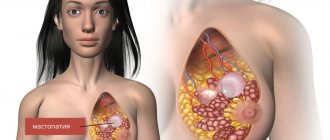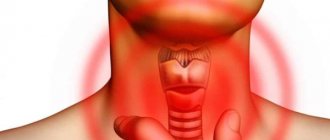Menopause dictates its own rules, individual for each woman. But many of the symptoms are similar, including the appearance of swelling of the legs. They turn slender legs into straight columns, make the gait heavier and pose a serious threat to blood vessels. The appearance of edema during menopause in women is associated with fluid retention in the body. To fix the problem, you need to understand why it appeared.
Why does swelling occur during menopause in women?
Menopause is a period of global restructuring of the female body after about 45 years, which affects almost all its systems and functions. It is a mistake to always attribute your poor health to menopause, because the reasons can lie much deeper and indicate the onset of a serious illness.
Swelling can appear on the face, body, arms, neck, but most often spreads to the legs. This happens due to the fact that the lower extremities bear the greatest load, which provokes a decrease in blood circulation. The main causes of fluid retention include:
- the presence of chronic ailments with kidneys, blood pressure, venous insufficiency, diabetes mellitus, etc.;
- obesity and regular overeating;
- constant stressful situations causing nervous tension;
- allergy;
- malfunction of the thyroid gland;
- violation of water-salt balance;
- taking medications.
Obesity can lead to edema during menopause.
The main reason for the development of edema is considered to be hormonal imbalance in the reproductive system. During menopause, a large amount of hormones are produced that stimulate the activity of the ovaries. Stimulated ovaries begin to intensively produce sex hormones. The body has to adapt to their increased level, and this requires a large amount of fluid.
Causes
The development of edema in itself is not a disease, but only a symptom of a dysfunction of organs and systems. Fluid retention is always a protective reaction of the body aimed at compensating for negative processes occurring in the body.
Common causes of edema include:
- lack of potassium and magnesium with increased sodium content;
- hypertension, severe heart disease;
- renal failure;
- endocrine diseases: hypothyroidism, diabetes.
Specific reasons for the formation of edema during menopause are:
- Violation of water-salt balance. The occurrence of such symptoms in a healthy person is associated with excessive consumption of table salt: an excess amount of sodium ions accumulated in cellular structures leads to an increase in osmotic intracellular pressure.
Against this background, the urinary system includes a protective mechanism aimed at reducing the concentration of salts and reducing cellular pressure - fluid retention begins, as a result, edema appears, localized, as a rule, in the lower extremities.
Reducing daily water intake when edema is severe is not an effective method of combating edema. Lack of fluid causes even greater disturbances in electrolyte balance, leading to increased symptoms and the development of other pathological conditions.
- Excess body weight. Fat cells easily attract water, but have difficulty releasing it back. This has dangerous consequences for the body - the production of estrogen-like substances, leading not only to fluid retention, but also to an increased risk of developing cancer.
- Disruption of the autonomic nervous system. Strong psychological and emotional stress, the presence of prolonged stress provoke excessive production of adrenaline, which affects the heart and blood vessels, which leads to the accumulation of excess fluid in the tissues.
- Hormonal imbalance that occurs during pregnancy, menopause, ovarian dysfunction, associated with insufficient production of progesterone and estrogen by the ovaries.
Clinical picture of menopausal edema
If the menopause period is physically normal, swelling should not occur. If signs of fluid retention appear, this means that something is going wrong and a doctor’s help is needed. Edema syndrome is expressed by the following symptoms:
- heaviness in the legs, pain that intensifies in the evening, an increase in the size of the legs;
- Facial swelling during menopause is expressed by puffiness and bags under the eyes. At the same time, general health may worsen: fatigue increases, headaches appear, blood pressure rises and arrhythmia occurs;
- irritability even to the most innocuous situations. From this, the adrenal glands begin to produce adrenaline in increased quantities, which puts an increased load on the organs of the cardiovascular system and they require more water.
Heaviness in the legs as a symptom of swelling.
In addition, swelling can cause the development of serious diseases:
- hypertension;
- kidney inflammation;
- heart failure.
In women, shortness of breath increases, depression develops, and excess weight is gained. Even minor and intermittent swelling may indicate the presence of a disease that requires attention from a specialist.
Why does swelling occur?
The main reasons for the appearance of edema can be identified:
- Disturbance in the water-salt metabolism system. An excess amount of sodium ions accumulates in the woman’s body. They begin to interfere with the natural outflow of fluid. As a result, water begins to accumulate in the intercellular space. As a rule, a woman experiences swelling of her legs in the area of the lower leg and feet, which is accompanied by a feeling of heaviness and sometimes pain. Ladies experience more pronounced swelling of the legs in the evening, after spending the whole day on their feet or during the heat.
- Excess weight. For normal functioning of adipose tissue, a large amount of water is required. Therefore, she attracts water to herself, which she is in no hurry to part with. When a woman is overweight, there is a lot of adipose tissue and water is attracted in large quantities. Thus, swelling appears. In order to remove them you need to get rid of extra pounds.
- Taking certain medications. The following drugs can cause swelling: anti-inflammatory drugs, antidepressants, medications that block calcium, and hormonal drugs.
- A tumor on the ovaries, kidneys or liver leads to swelling of the legs or the whole body.
Regardless of the cause of the symptom, it should not be neglected. You should immediately seek medical help to relieve swelling.
Diagnosis of edema during menopause
You can find out about fluid retention in the body by performing a small test. If, when pressing on the skin, visible fingerprints remain on it, this indicates the presence of swelling. Based on the location of the edema, certain problems in the body are judged.
Swelling in the lower extremities indicates general fluid retention. Swelling is especially pronounced in the ankle area, which may be associated with kidney problems, vascular disease and varicose veins.
Facial swelling is noticeable and usually develops due to allergies, hormonal disorders, and in particular, malfunctions of the thyroid gland. For diagnosis, a consultation is prescribed not only with a gynecologist, but also with a urologist, cardiologist, and phlebologist. They will prescribe medications and tell you how to remove swelling during menopause.
Phytoestrogens for edema
Not all women during menopause can take hormonal medications. Therefore, phytoestrogens are prescribed as treatment.
For example:
- "Qi-klim." It has a good calming effect, including a sedative spectrum. The active components of the drug help reduce the severity of symptoms during menopause. Eliminate swelling, sweating, hot flashes.
- "Klimadinon". The composition contains cohosh extract, so the drug can quickly restore hormonal levels.
To restore the water-salt metabolism system, doctors prescribe diuretics to women. If only swelling and hot flashes are present, then the drug Furosemide can be used. Available by prescription, it has a pronounced diuretic as well as natriuretic spectrum of action. The active components of the drug are aimed at blocking sodium and chlorine ions. The maximum daily dosage of the drug is no more than 1500 mg.
Contraindications:
- glomerulonephritis;
- renal failure;
- intolerance to the composition of the drug.
Diacarb is prescribed for severe symptoms. The drug has a diuretic spectrum of action. Diacarb is a fairly strong drug; it actively begins to remove potassium from the body. Therefore, take it only in complex treatment.
Before using any of the above-described medicines, you must carefully read the instructions. Each remedy has its own contraindications. It is best to take the drug strictly in the dosage prescribed by your doctor, this will help avoid side effects and other health complications.
Therapeutic methods to combat swelling
What to do if there is stagnation of fluid in the body? Most often, the causes of swelling of the face and limbs are not one factor, but a combination of them, which is why the treatment is prescribed in a variety of ways.
Hormonal treatment
Hormones are the main sources of fluid retention in the body. To normalize their work, hormone replacement therapy with synthetic estrogen preparations is prescribed. They restore the level of female hormones and thanks to this, the unpleasant symptoms of menopause disappear. These include:
- Klimonorm is a drug based on estrogen and gestogen. Normalizes hormonal levels, treats the psycho-emotional manifestations of menopause, and prevents the development of complications such as cancer and osteoporosis. As a pleasant bonus, a woman receives tightened skin due to the increased collagen content in the medicine;
- Proginova - contains estrogens, relieves symptoms, normalizes the psychosomatic state, prevents the development of osteoporosis.
Klimonorm is a drug for the treatment of edema during menopause.
Hormonal drugs have many contraindications, so taking them is sometimes impossible. For such patients, the doctor prescribes homeopathic treatment and traditional medicine.
Complex treatment
As a comprehensive approach to the treatment of edema during menopause in women, a number of drugs are prescribed:
- sedatives that relieve the psycho-emotional manifestations of menopause;
- diuretics of synthetic and natural origin;
- vitamin complex with a high content of vitamins A, B, D, E and minerals - potassium, magnesium, iron;
- phytoestrogens are agents that have a milder effect than hormonal medications. These are preparations from the groups of isoflavonoids, lignans, coumestans, as well as medicinal, homeopathic preparations based on plant estrogens and dietary supplements (Clomiphene, Klimaktoplan, Remens, Klimadinon).
In addition to pharmaceuticals, a woman should follow a diet, exercise and spend more time in the fresh air.
ethnoscience
Treatment with home remedies brings the same therapeutic effect as medications. They are prescribed as substitutes when there is an allergy to medications or included in complex treatment. To relieve edema, diuretic decoctions and preparations are prescribed:
- dill seeds are brewed with boiling water, take 0.5 cups twice a day;
- freshly squeezed cucumber, carrot and lemon juices in a total volume of 250 ml are diluted with water and drunk three times a day after meals;
- 5 tablespoons of finely chopped horsetail are poured into 0.5 liters of boiling water and left for 30 minutes. Take 3-4 tbsp strained. l. before meals 4 times a day.
Foot baths help remove excess fluid from the body:
- birch leaves, mint leaves and chamomile flowers are mixed in equal proportions. Take 100-200 grams of the dry mixture, pour boiling water over it and leave for 30 minutes. The resulting infusion is diluted with warm water and feet are soaked in it for 10-15 minutes;
- mix 100 grams of juniper berries, 100 grams of sea salt, a tablespoon of dry mustard, a teaspoon of baking soda. Everyone pour 1 liter of warm water and leave for half an hour. The resulting mixture is diluted with water and the procedure is carried out for 15 minutes.
Compresses to eliminate swelling on the face:
- moisten the crumb of rye bread with two tablespoons of freshly squeezed juice from medicinal lemon balm leaves and apply to the swelling for 15-20 minutes;
- Grate half a fresh cucumber on a fine grater. Wrap the resulting mass in gauze and apply it to your eyes for 10 minutes.
Exercises with standing on your toes for 1 minute and rolling from heel to toe for five to seven minutes will help relieve swelling in your legs. You can repeat this warm-up up to 5 times a day.
Treatment
Therapy for edema is prescribed depending on the severity, the woman’s medical history and general condition. Due to the fact that during menopause there is a hormonal imbalance, it is necessary to normalize the level of hormones. Synthetic drugs that contain estrogen are prescribed.
“Klimonorm” is a combined anti-menopausal drug, which contains not only estrogen, but also gestogen. Due to this, it is possible to quickly restore hormonal levels. The drug is dispensed from the pharmacy strictly with a prescription from a doctor. Prescribed in a dosage of 1 tablet once a day. Contraindications: do not use the drug for severe liver diseases; thromboembolism; individual intolerance to the composition; deep vein thrombosis, especially in the acute stage; tumors in the liver of various etiologies and courses (malignant, benign).
"Proginova" : contains estradiol valerate. The drug has an estrogenic spectrum of action. Prescribed in a dosage of 1 - 2 mg per day. Proginova must be taken in courses that are selected individually. Contraindications: severe kidney or liver disorders; liver tumors; diabetes.
Prevention of swelling during menopause
To prevent the appearance of edema with the onset of menopause, a woman needs to pay increased attention to her health. This is especially true for diet. Foods and dishes high in salt are excluded from it. You also need to give up bad habits and follow a daily routine with moderate physical activity and good sleep.
By following all the recommendations, you can not only remove swelling, but also relieve other unpleasant symptoms, and then this difficult period will pass with minimal losses.











